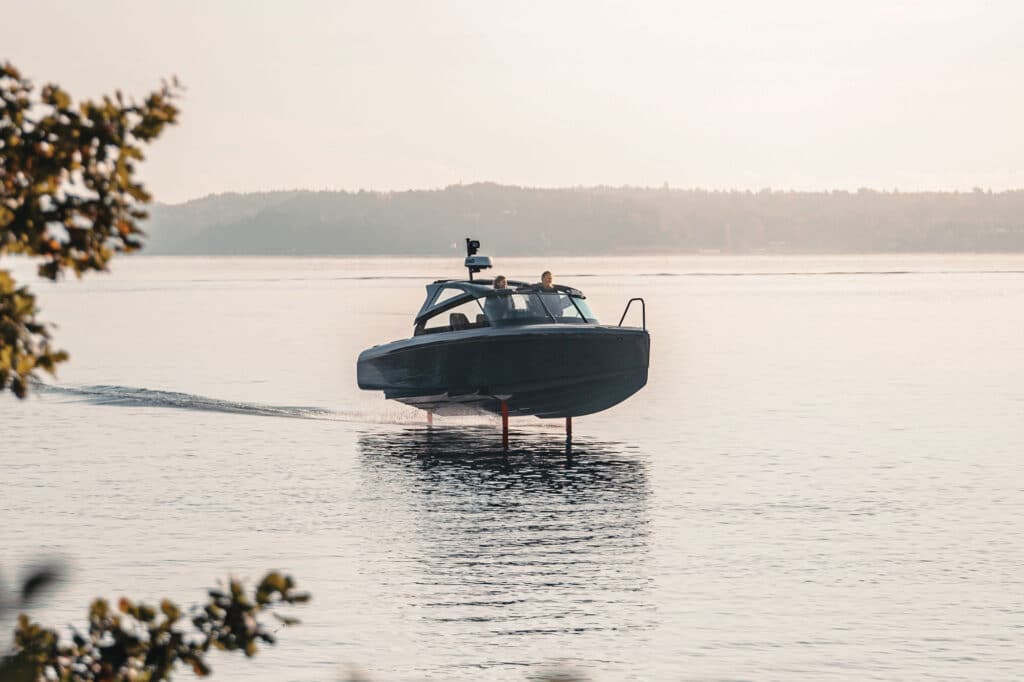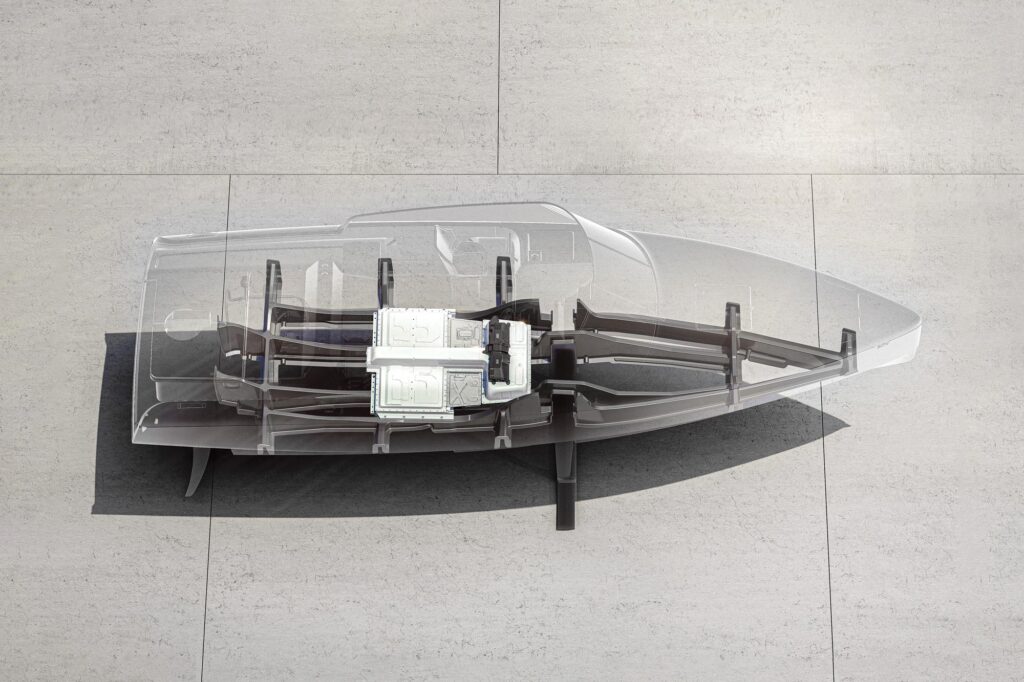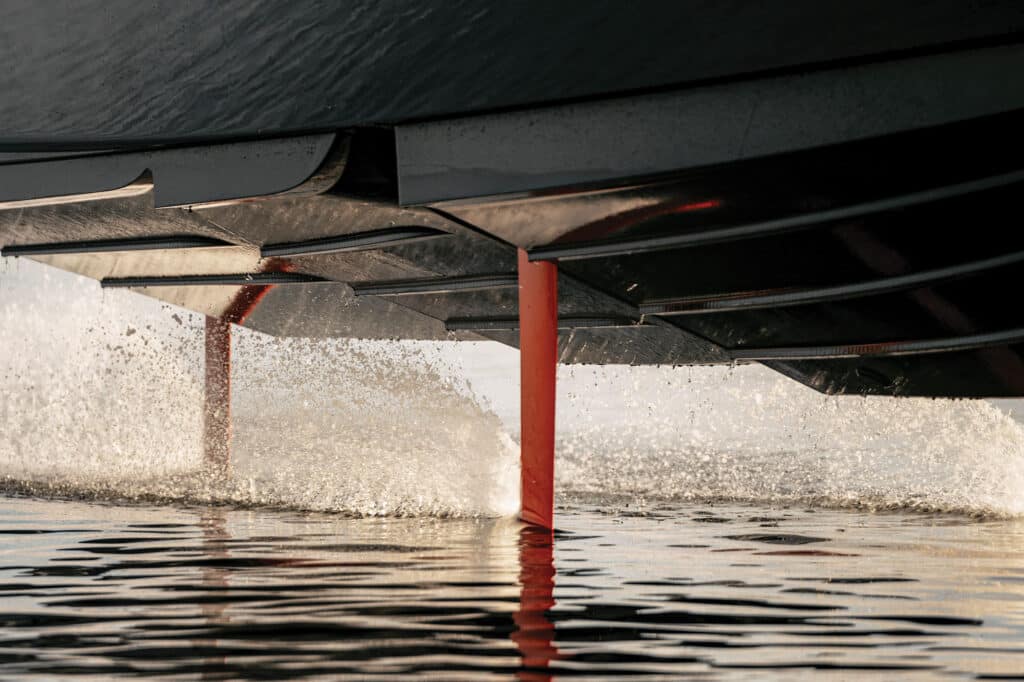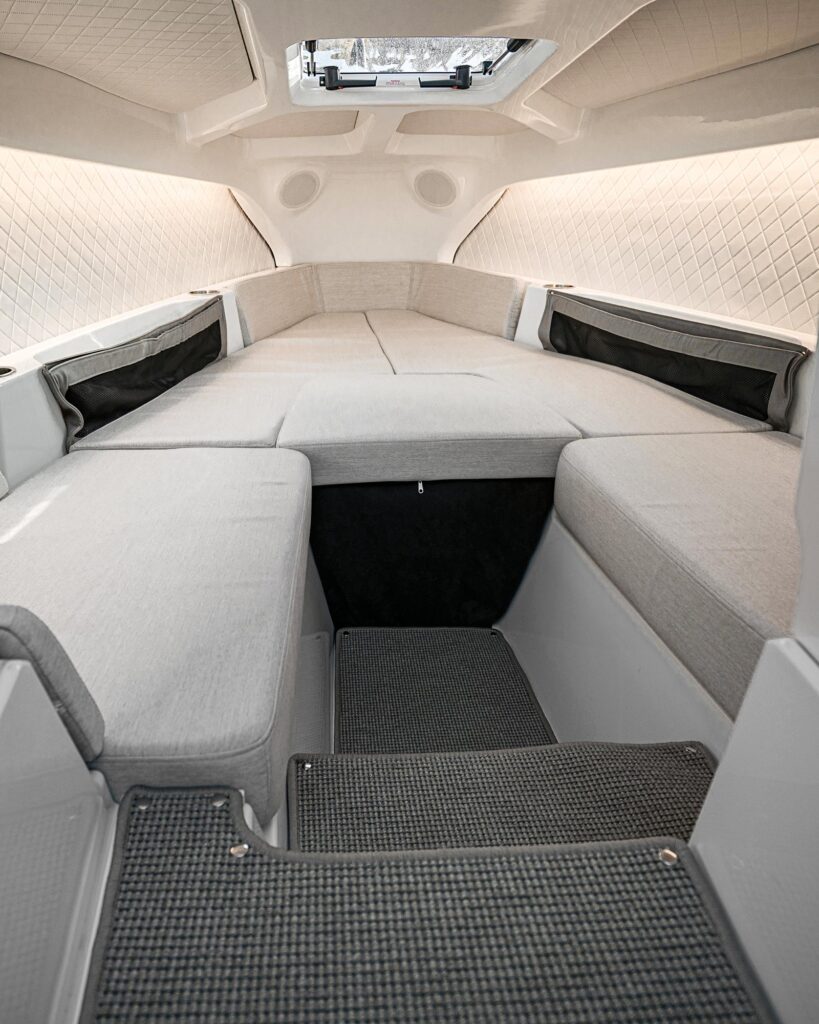
Swedish boatbuilder Candela announced in January that it had achieved an expected 65-mile range with its C-8, a nearly 28-foot-long carbon-fiber foiling powerboat that runs on electric power.
The technological advancement in extending the boat’s range—a task that has long bedeviled makers of electric boats worldwide—was achieved in collaboration with the Swedish company Polestar, which is Volvo’s electric-vehicle subsidiary. Candela and Polestar first announced their collaboration this past August. According to Candela, the 65-mile range announced less than six months later makes the C-8 the world’s longest-range electric boat available today.

The Candela C-8 will use the same 69 kWh battery pack and DC charging technology as the Polestar 2, a vehicle that has a reported 300-mile range on the roadways. The boat’s 65-mile range will be achievable on a single charge at a cruising speed of 22 knots.
“This collaboration means that C-8 can travel to destinations previously only reachable by combustion-engine boats,” Gustav Hasselskog, the CEO and founder of Candela, announced. “The Candela C-8 powered by Polestar marks a significant breakthrough for electrification at sea.”

The boatbuilder says the C-8’s hydrofoil technology is also a key element in the range extension. As shown in the photograph, the C-8 can “fly” above the waves on computer-guided underwater wings that reduce water friction. Candela says the C-8 uses 80 percent less energy than conventional boats at high speed. Its pod motor, the Candela C-POD, outputs 75 kW (the equivalent of 100 hp) for takeoff. Once foil-borne, the C-8 draws around 23 kW (about 30 hp) continuously from its Polestar battery pack. A similar-size conventional powerboat would use around 120 kW (160 hp), according to the Candela team.
Another thing that makes the boat notable, the company says, is the way the collaboration with Polestar enables DC charging on board. The installation of standardized charging stations for electric boats is a chicken-and-egg situation, with many marina owners holding off on adding higher-speed charging stations until more electric boats are on the waterways to use them. “With access to DC fast chargers, which are now starting to pop up in several places around the globe, you can cover totally new routes with Candela C-8,” Hasselskog says. “You can go from Sweden to Finland in one day, or along the entire French Riviera in a few hours.”

The C-8 is not the builder’s first model; the company, founded in 2014, previously launched the C-7 bowrider, without an enclosed cabin. That boat, which was announced in 2019, was suitable for six people. It’s now only available on the brokerage market.
All new-order Candela C-8s going forward will be equipped with the Polestar batteries, the company says. The boat can be ordered in three versions: day cruiser (with an open top), hardtop and T-top. The interior layout is designed for overnights with two adults and two children, with a marine head, dimmable lights and an optional premium sound system.
Deliveries on the boats are expected to take place starting in 2024. According to Candela, the company has already received more than 150 orders for the C-8.
High Tech Meets Scandinavian Style
The Candela C-8 foiling electric powerboat comes from Sweden. Its interior styling is based on the basics, with a marine head and room for two adults and two children to sleep overnight. The sex appeal of this boat is in its technology, including the foils and the battery-powered propulsion. The foils can be fully retracted out of the water when the boat is at the dock, which should cut down on marine growth that could increase drag and reduce range. Using them is reportedly easy; some reporters with no boating experience say they can have the boat flying within about two minutes.









